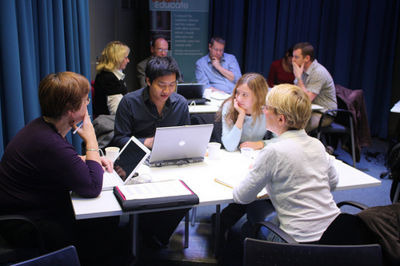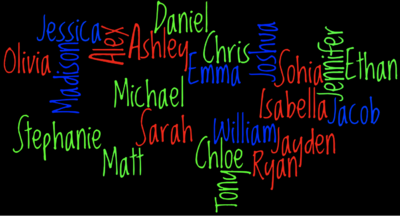Gaining Foundation Skills for Learning and Teaching/Connecting with Students
Contents
Connecting with Students
An important component of any learning experience is the connection between the learner and what it is they are learning. Through a sense of connection, deeper understanding can occur. If you are trying to facilitate a learning experience for someone else it is also important that you make a connection with that learner. So what does this really mean for you as a teacher /facilitator?
Key Factors
There are a range of key factors that will make a difference to connecting with students and starting a year (or class) well.Let's explore them.
Focus on learning
The term Learner Centred Learning is becoming more commonly used, this means the focus is on the learner and what and how they are learning rather than the focus being on the teacher and the knowledge they are able to offer others.
- What do your learners really want?
- What are their expectations of the learning experience?
Names
Saying that you are not good with remembering peoples names is a cop out from making the effort.The use of a name can be important to a student feeling recognised, being valued and connecting with the learning.
Consider different tricks and tools to remember students' names such as:
- name tags/labels
- class photo ID sheets
- writing names on a seating plan as students introduce themselves and refer to it throughout the class
- linking names to someone/something else that has meaning for you
- repetitive letter association games
- first person says a descriptor with same first letter or sound as their name, and their name e.g. Happy Heather
- second person repeats and adds their own
- if larger group (8+) individuals may need group support to remember all names in the group.
This pdf Games that help to ‘break the ice.’ has a great range of name game suggestions
and this website Games for Learning Names has a few more.
Comfortable environment
It is important that the learner feels comfortable enough to ask questions and receive the feedback and support they need.A friendly welcoming approach from the facilitator makes all the difference.
You can use icebreakers as a way for everyone to get to know each other and feel more comfortable together. Some examples include:
- an autograph hunt - give students a sheet of paper with a variety of statements/questions and students need to find others in group that can sign off that statement, eg, is wearing red today, has eaten junk food in the last week, has same star sign as you, has done something daring recently, etc.
- 2 truths one lie - Make up 2 truths and one lie about yourself, present 'facts' to the rest of the group who have to choose the lie.
- Physical games: such as the wool/string web - Standing in a circle one person holds the end of a ball of wool and calls another's name tossing them the ball. The game continues until everyone is connected to the web and the ball has gone back to the first person.
- Problem solving games:encouraging students to work together in a group to solve brain teasers such as the following examples.
Check out Icebreakers, Warmups,Energizers, & Deinhibitizers for lots of other examples.
Create a sense of warmth and have some fun.
Clarity of information
It is important to ensure that you provide clear information about what you are covering.If engaging learners in activities, check their understanding of what is required.
Be clear about your expectations of the learners. This involves being self-aware of what you expect from the students in terms of behaviour, engagement and commitment. Clearly convey those expectations to the learners. Ensure there are no hidden agendas.
Also be careful with assumptions around 'commonsense', it is only common if actually shared and understood by those involved.
Student connections
Encourage students to connect with each other.Learning doesn't occur in isolation but develops through sharing of ideas, knowledge and understandings.
The more you can encourage students to connect with each other the more opportunities they have to increase their learning in ways that are meaningful to the students.
It can also increase the potential to add fun to learning.
Just be you
Don’t try to be ‘down with it’ ie, using language that you wouldn’t normally use.Find other ways to connect with the language that the learners commonly use. (This is especially important if working with young adult learners as use of their colloquialisms is often not received well.)
To be the best teacher/facilitator you can be you need to be true to your own style of behaviour and interaction (whilst being respectful to others). Trying to pretend to be another persona doesn't ring true for learners and is really hard work.
Be human and be real
Show willingness to learn
Role modelling learning and engaging in shared learning is an additional way to support learners in their own development.
This demonstrates that learning doesn't just occur at set points but is a lifelong process.
It can also help learners to be more comfortable in approaching you if they feel you are all part of a shared process.
::*Focus on learning
|





